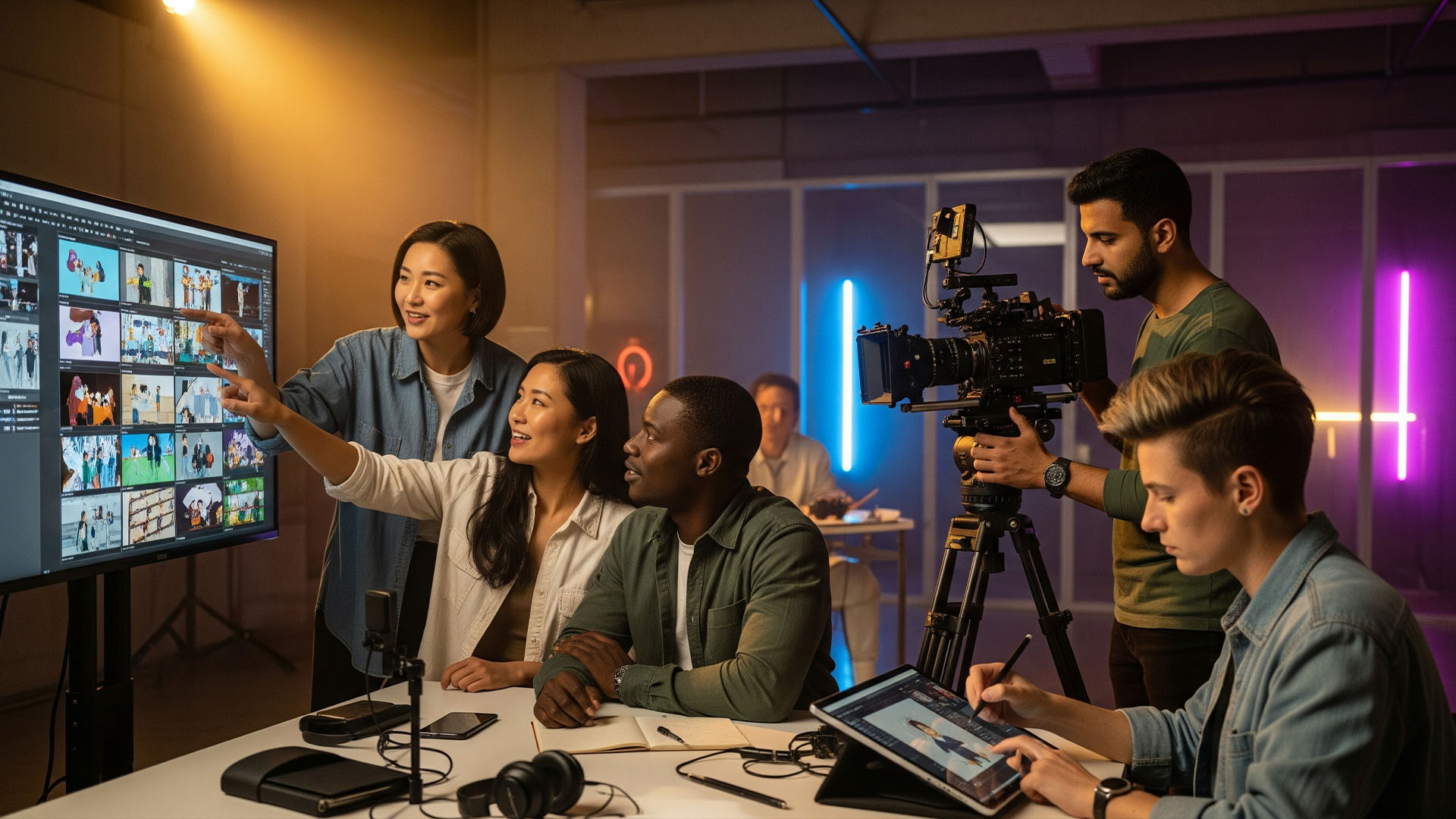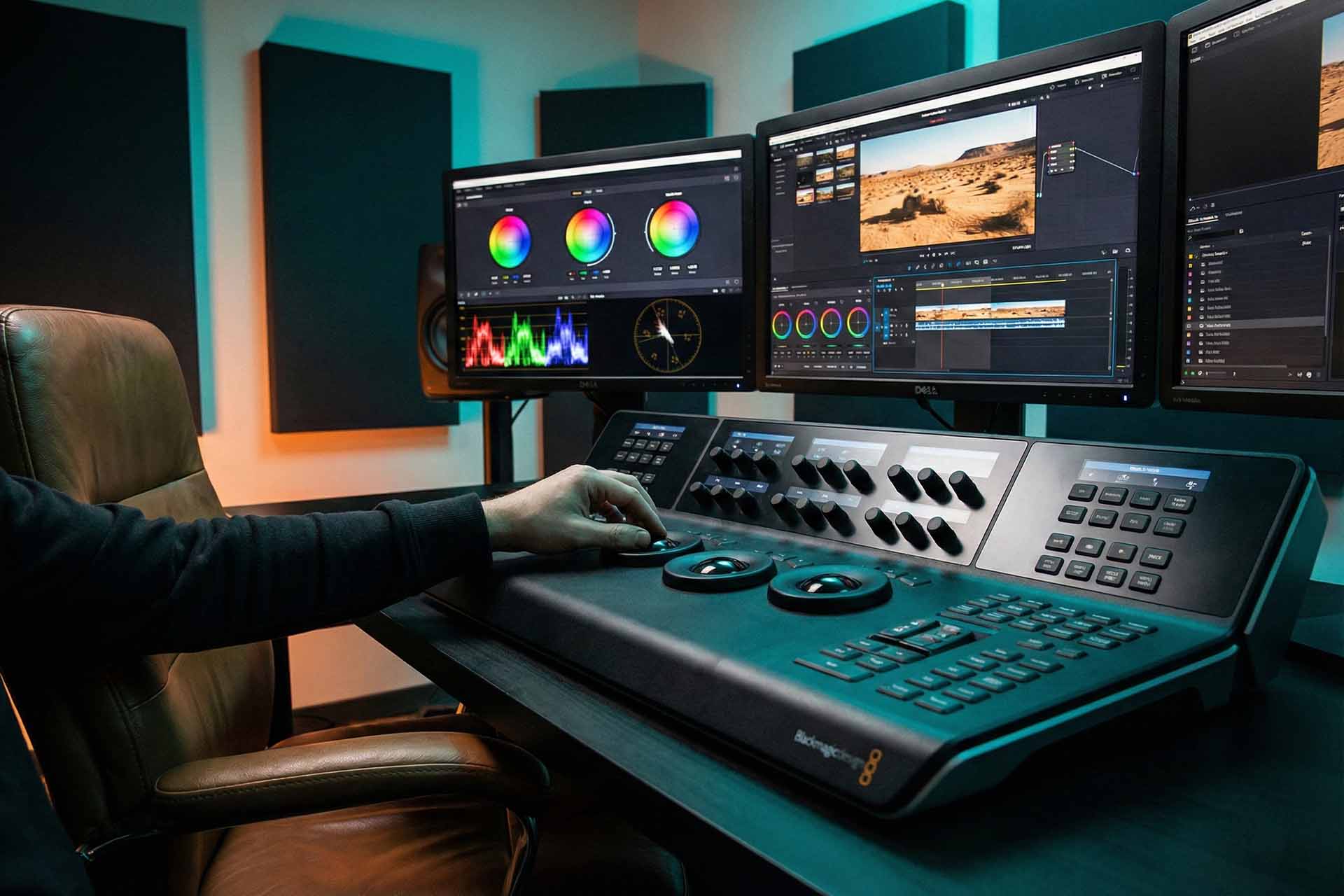
Build a Winning Visual Production Team in 2025: Your Guide
In a relentlessly accelerating digital world, visual content has become the language of successful brands. Therefore, building a visual production team is no longer just an option but a strategic necessity to stay ahead of the competition. As 2025 approaches, the rules of the game are changing, merging traditional creative skills with advanced technology and a superior ability to adapt.
So, how can you establish a visual production team that not only keeps up with developments but creates them? This guide provides you with a clear and practical roadmap.
First: The Foundation of Success: The Core Team Structure
Before anything else, you must build a solid foundation. In fact, any successful project depends on having clearly defined roles that ensure a smooth workflow from idea to execution. Here are the indispensable pillars:
- The Producer: The mastermind and orchestra conductor. The producer manages the entire project, from setting the budget and timelines to coordinating with all parties to ensure goals are met efficiently and effectively.
- The Director: The creative vision of the team. The director works to translate ideas into an impactful visual language, guiding cinematographers and editors to ensure the final product tells the intended story and achieves the desired effect.
- The Scriptwriter: The one who weaves words and crafts dialogue. The scriptwriter transforms abstract messages and ideas into a coherent visual and audible story, giving the work depth and meaning.
- The Cinematographer (Director of Photography): The artist of light and lens. This person is responsible for everything related to the visual aspect, from selecting the right cameras and lighting to composing shots, working closely with the director to turn their vision into vivid, captivating images.
- The Editor: The one who brings all the threads together. The editor assembles the filmed footage, adds visual and sound effects, and polishes the content into a final product that is seamless and engaging for the viewer.
Second: Skills of the Future: Specialized Roles for 2025
To excel in today’s market, the basic structure is no longer enough on its own. Consequently, you must support your team with specialized skills that reflect modern content trends.
- Motion Graphics/VFX Artist: With the dominance of short, captivating content on platforms like TikTok and Instagram Reels, having a specialist who can create attractive animations and visual effects has become essential to add a professional and dynamic touch.
- Sound Designer: Sound is half the experience, and sometimes it’s everything. For this reason, your team must include a sound engineering expert capable of recording audio clearly, mixing it masterfully, and adding sound effects and a score that enhance the story and evoke the audience’s emotions.
- Digital Marketing and Distribution Specialist: The success of any visual content is incomplete without reaching the right audience. This expert develops strategies for publishing and distribution across various platforms, analyzes data, and ensures maximum reach and engagement.
- Interactive Content Creator: With the growing popularity of interactive content like 360-degree videos, quizzes, and augmented reality (AR), having a team member who can design these innovative experiences gives you a huge competitive advantage.
Third: The Collective Spirit: Building an Inspiring Team Culture
A successful team is more than just a collection of skills; it’s a harmonious and stimulating work environment. Furthermore, a positive culture is the fuel that drives creativity to its limits.
- Encourage Collaboration and Brainstorming: Don’t let team members work in isolation. Instead, organize regular brainstorming sessions and encourage the exchange of ideas and constructive criticism among everyone, from the scriptwriter to the marketing expert.
- Invest in Continuous Learning: The visual content production sector is evolving at a breathtaking pace. Therefore, allocate a budget to train your team on the latest technologies, such as using AI in editing, and to keep up with new trends in storytelling.
- Look for Passion, Not Just Experience: When hiring, look for individuals who are passionate about learning and experimenting. These people often have the flexibility and ability to acquire new skills that go beyond what a traditional employee offers.
Fourth: The Gear and Tools: Essential Equipment and Technology
Finally, your team cannot achieve its creative vision without the right tools. Invest in technologies that enhance efficiency and quality.
- Editing and Effects Software: Adobe Creative Suite (Premiere Pro, After Effects), DaVinci Resolve, Final Cut Pro.
- Audio Software: Adobe Audition, Audacity, Pro Tools.
- Project Management Tools: Asana, Trello, Monday.com to organize tasks and track deadlines smoothly.
- Filming Equipment: Invest in professional high-definition cameras (4K minimum), a diverse set of lenses, good lighting systems, and high-quality audio equipment to ensure a professional final product.
Finally: From Theory to Application with Your Creative Partner
Building an integrated visual production team as detailed is a strategic investment in your brand’s future. However, it can require significant time and resources, and this is where an expert partner who already has this integrated system comes in.
At Loop Media, we don’t just talk about these principles; we live them daily. Our team embodies this integration of creative talents and technical expertise. We are fully prepared to be an extension of your team, providing you with all the necessary experience and tools to produce exceptional visual content that will compete in the arena of 2025 and beyond.
Are you ready to turn your vision into a tangible reality? Contact us at Loop Media to start the creative journey together.
- 📞 (+966) 53 692 8397
- 📧 Support@loop-media.co
- Visit our Contact Us page.
This article is available in Arabic. You can read the Arabic version [here].
Frequently Asked Questions (FAQ)
1. What are the most important roles in a core visual production team? The core roles are: the Producer (for project management), the Director (for creative vision), the Scriptwriter (for the story), the Cinematographer (for visual quality), and the Editor (for editing and assembling the final product).
2. What are the key new skills required for a successful production team in 2025? In addition to the core roles, skills such as motion graphics design, advanced sound engineering, digital marketing and content distribution, and interactive content creation (like AR) have become vital for competing effectively.
3. Why is team culture so important in visual production? Because visual production is inherently a creative and collaborative process. A positive team culture encourages brainstorming, the free exchange of ideas, and continuous learning, which leads to a more innovative and high-quality final product.
 العربية
العربية


